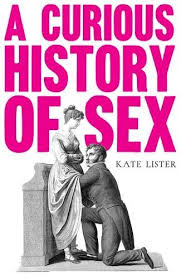Zoe Williams at The Guardian:
 As late as the 20th century, grafting a monkey’s testicle on to your scrotum was considered a plausible cure for impotence and general sluggishness. As early as 1139, it was signed into canonical law that impotence was grounds for the annulment of a marriage, so you can see why the try-anything approach persisted, when a person could be unmade by physical failure, publicly ejected from the organising bond of society. Dough has reminded humans of sex, one way or another, pretty much since the cultivation of wheat began; any loaf of bread worth its salt was originally designed to resemble either a penis or a vagina. But much of the significance of food, especially in the early modern period, was not its erotic redolence but its mediating role in the bewitchery of carnal urges. So a wife might increase her husband’s ardency by keeping a live fish in her vagina for two days, then roasting it and feeding it to him. Or she might, conversely, set out to kill him by covering herself in honey and rolling in wheat, before grinding the wheat and turning it into bread, which she then fed to him. But she’d have to remember to mill it in the opposite direction to the sun, whatever that means.
As late as the 20th century, grafting a monkey’s testicle on to your scrotum was considered a plausible cure for impotence and general sluggishness. As early as 1139, it was signed into canonical law that impotence was grounds for the annulment of a marriage, so you can see why the try-anything approach persisted, when a person could be unmade by physical failure, publicly ejected from the organising bond of society. Dough has reminded humans of sex, one way or another, pretty much since the cultivation of wheat began; any loaf of bread worth its salt was originally designed to resemble either a penis or a vagina. But much of the significance of food, especially in the early modern period, was not its erotic redolence but its mediating role in the bewitchery of carnal urges. So a wife might increase her husband’s ardency by keeping a live fish in her vagina for two days, then roasting it and feeding it to him. Or she might, conversely, set out to kill him by covering herself in honey and rolling in wheat, before grinding the wheat and turning it into bread, which she then fed to him. But she’d have to remember to mill it in the opposite direction to the sun, whatever that means.
more here.
